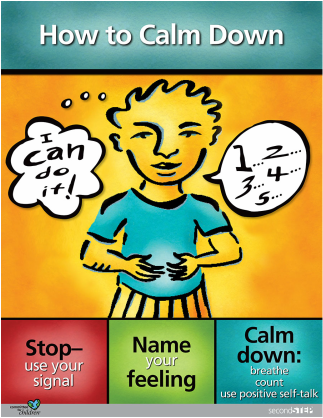- Learn@Home
- Second Step - Social Emotional Learning
-
Classroom Instruction for ALL !
One aspect of school counseling is that ALL students receive Counseling Classroom Instruction regardless of their age, grade level or ability. This occurs across the district and is coordinated to ensure that all students have the attitudes, knowledge and skills to be successful. In the classroom, counselors discuss developmentally appropriate topics with students to build skills to be successful in and outside the classroom. Topics are scaffolded by grade level and include:
- General Learning and Listening Skills
- Empathy Training
- Emotion Management
- Problem Solving
- Bully Prevention
- College and Career Exploration
The vast majority of lessons utilize an evidence-based curriculum called the Second Step. Other resources, include social stories books from Boys Town, Sanford Harmony, Kimochi's, Zones of Regulation, California Career Zone, and common counselor generated curriculum that has been vetted by our counseling team! If you have any questions or would like to preview any of the curriculum, please contact me.







Second Step
-
Benefits of Second Step
-
Better Learning
The program teaches essential skills for learning—listening, focusing attention, using self-talk, and being assertive—that help kids be better learners and do well in school. Kids who can pay attention and ask for help when they need it are more prepared to learn than those who can’t.
Research shows that students who learn these skills through a curriculum such as the Second Step program show an 11 percentile-point gain in overall academic achievement. It also indicates that the positive effects of learning these skills last over time.
Better Self-Control
 The Second Step program teaches kids skills that help them control their own behavior, impulses, and emotions. And they are taught how to recognize when they are having a strong feeling and ways to calm it down, including belly breathing.
The Second Step program teaches kids skills that help them control their own behavior, impulses, and emotions. And they are taught how to recognize when they are having a strong feeling and ways to calm it down, including belly breathing.These skills make it easier for kids to do things like sit still and listen, or pause and take a deep breath instead of reacting without thinking. Students who can manage their own behavior and emotions are better prepared to learn and get along well with others.
Better Friendships, Less Bullying
The Second Step program teaches kids skills that help them get along better with others. Students learn how to recognize others’ feelings, show kindness and compassion, play fairly, and invite others to join. These skills are essential for building strong friendships and help increase kids’ feelings of safety and belonging at school.
The friendship-building and assertiveness skills taught in the program may also help children handle bullying situations. The program presents scenarios—such as what to do when someone knocks you down or calls you names—that help kids apply the skills they’re learning to situations they might encounter in real life.
-

